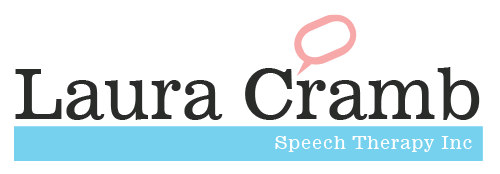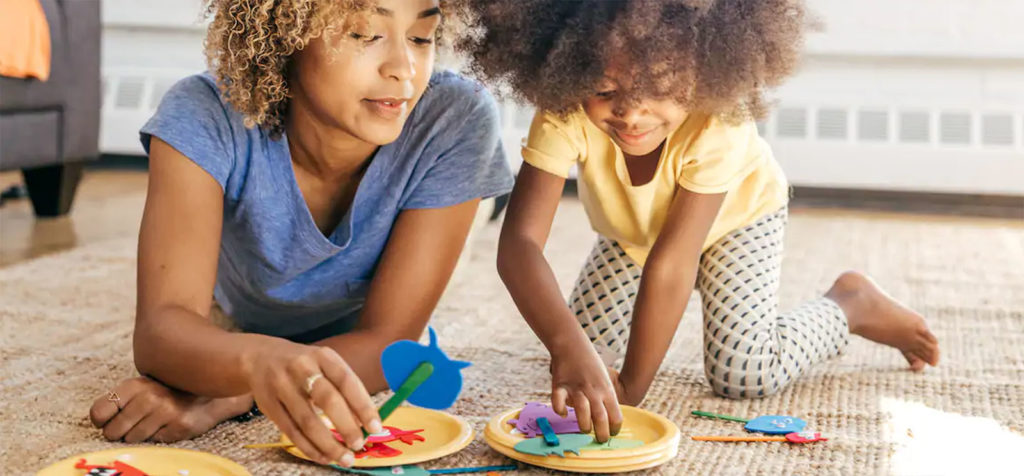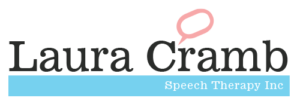Hearing your baby say her first word is a memorable milestone, but what if she doesn’t seem to be communicating as effectively as her peers?
- Many parents are advised to consider speech therapy if they are concerned about their child’s speech development. But what is it and how do you know when it’s necessary?
“Speech therapy covers a wide spectrum of development in children, including feeding, speech, language and pragmatics [the social aspect of language],” explains speech therapist and audiologist, Ashira Segal. As a child grows, various skills are learned and developed, but sometimes a child needs therapy to help overcome an obstacle or to learn an age-appropriate skill. Speech therapists help children through oral motor therapy. For example, there may be a weakness in the jaw or lips, which affects their ability to articulate sounds. Oral motor therapy strengthens the muscles, helping them to speak more clearly, and various techniques are used to target specific speech sounds.
Does my child need speech therapy?
Parents will often notice that something “isn’t right”, but they don’t know where to begin. “I am asked the same questions regularly,” says Ashira. “‘Does my child actually need speech therapy?’, When should he be saying the /r/ sound?’ and ‘Why am I the only one who can understand my child?’”Babies begin learning from birth, she explains. “They can’t say much, but they listen and learn language, as well as how to distinguish between sounds. “At about nine months, they have learnt all of these sounds receptively and now need their motor skills to develop in order for them to start saying the sounds.”Early intervention therapy for children aged 0-3 years old focuses on pre-linguistic skills, which are the foundation of language and necessary for communication.Pre-linguistic skills include:
- Turn-taking
- Imitation
- Joint attention
- Requesting (achieved through play), which will then translate into aspects of communication.
Language therapy for children aged 0-5 includes basic concepts, such as colours, body parts and shapes.
Many children in Ashira’s practice also struggle with sentence structure, so correct syntax is part of the treatment protocol. Other aspects of speech therapy include auditory processing – the ability to understand speech, follow directions, distinguish between sounds and comprehend spoken information. This is particularly important in the classroom environment.“Feeding issues are also addressed through oral motor therapy. If the jaw isn’t strong enough to chew, or the tongue is unable to propel food back, this affects eating ability,” says Ashira.
“Sometimes, children also have difficulty swallowing. This may be congenital or acquired and there are many ways to treat this.”
What is normal and what’s not?
- Some speech errors are age-appropriate, while others are not, explains Ashira. If a three-year-old can’t say the /r/ sound properly, producing “wabbit” instead of “rabbit”, this is considered age-appropriate speech, as the sound is still developing.
- However, leaving out the initial sounds of a word, such as saying “ee” for “tree”, or “ick” for “stick”, is not considered age-appropriate and a speech therapy assessment should be conducted.
Steps in speech development
Below are the age-appropriate speech milestones that a parent or therapist looks out for in a developing child. These are general guidelines only.
Birth – 6 months
- Speech sounds: Vowel sounds /a, o, u/. You may start to hear vocal play such as squeals, growls, or “raspberries”.
6 – 12 months
- Words: A child will start putting consonants and vowels together, such as “ba” followed by duplicated babbling, such as “baba” and babble combinations, “bamaba”.
- Sounds: /p, b, m/ usually followed by /h, y, n, w, d/.
- Other: May start responding to name.
One year old
- Words: Two to six words other than “mama” and “dada”.
- Sounds: You may start hearing /t, g, k, s/.
- Other: answers “yes” or “no” to questions.
Two years old
- Words: 50-200 words.
- Sounds: Same as above, including /ng/ as in “sing”.
- Speech intelligibility: The child should be understood 50% of the time.
- Other: Points to objects and body parts and follows two-step directions.
Three years old
- Words: 300 to 1 000 words and uses three-word phrases.
- Sounds: Same as above. You may start to hear /f, r, l/ and other sounds developing.
- Speech intelligibility: The child should be understood 75% of the time.
- Other: Uses pronouns, present tense and prepositions.
Four years old
- Words: 1 600 to 2 000 words.
- Sounds: You may start hearing sounds such as /z, th, j, v, ch, sh/ developing.
- Speech intelligibility: The child should be understood 90% of the time.
- Other: Can ask and answer questions and follows three-step instructions.
Five years old
- Words: 2 200 to 2 500.
- Sounds: Same as above; may start to hear /zh/ sound, as in “measure”.
- Speech intelligibility: Should be understood 100% of the time.
- Other: Understands opposites and time concepts such as yesterday, today, and tomorrow.
Red flags
Common signs of speech delay or problems include:
- A quiet baby who does not make sounds or babble.
- A child who does not respond to noise.
- A child who has not said his first word by 15 months.
- A child who is not social and shies away from making eye contact.
- A vocabulary of less than 50 words by two years of age.
- Inability to follow simple instructions by two years of age.
- Other people are unable to understand your child at three years of age.
- Has known speech difficulties, such as stuttering or lisping.
- Has any speech sound error after five years of age.
What causes speech problems and delays?
There are several reasons for speech problems and delays, explains Ashira.These include developmental delays, such as learning difficulties; prematurity; auditory processing difficulties; structural difficulties, including cleft lip or palate; apraxia of speech (a motor speech disorder in which a child battles with sequencing and executing speech movements) and disorders such as autism and Down’s syndrome.
At what age can you start speech therapy?
- “I am a firm believer in early intervention,” says Ashira. “Previously, children were referred for speech therapy from age five and up, based on the belief that they would manage, develop and speak clearly by themselves.
- “I feel that the age of referral has decreased, because early intervention has become popular. This yields better results, as children are younger and more malleable.”
- Treatment nips potential problems in the bud, including academic issues, emotional stability (the risk of being teased by other children is reduced or removed) and psychological self-confidence (children may feel “different” or “stupid” if they communicate differently).
Tips to try at home
Encourage your little one’s speech development at home in the following ways:
- Speak to your newborn. It may be a running monologue, but your child will benefit from hearing speech, even from birth.
- Respond to cooing and babbling.
- Play simple games, such as peek-a-boo and patty-cake.
- Listen! Look at him when he talks to you and then give him time to process your response.
- Tell your child what you are doing as you do it (running monologue). Talk about how you are feeling, or how he might be feeling.
- Encourage story-telling and sharing of information.
- Don’t try to force your child to speak.
- Explore picture books together, and when he is older, read to him. Children benefit from every tiny bit of input. Receptive language develops before expressive language, so he is learning, even though you may not see it.
- Sing and play music. These help with learning new words, memory and listening skills and expression of ideas.
- Expand on what your child says. For example, if he says “book’, respond with, “Do you want the cat book or the dog book?”
- Answer your child each time he speaks to you, even if you’re unsure of what he is saying.
- Ask lots of questions.
- Don’t criticise speech or grammar mistakes; rather model good speech for him to learn and copy.
- Follow your child’s lead, so that you are doing activities that hold his interest as you talk.
- Encourage play with other children – even those whose speech or language is more advanced. Children learn from each other.
Article: Living & Loving




